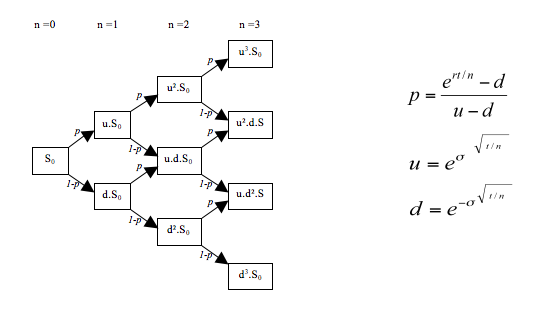- Joined
- 5/28/23
- Messages
- 15
- Points
- 13
from the book it is using below
Whick look different than the common one(which we learn in CFA

 en.wikipedia.org
en.wikipedia.org
Wonder if they are same model, but just different presentation,
or above one is move advance?
double dt = T/N; double nu = r - 0.5*sig*sig; // Up and down jumps double dxu = std::sqrt(sig*sig*dt + (nu*dt)*(nu*dt)); double dxd = -dxu; // Corresponding probabilities double pu = 0.5 + 0.5*(nu*dt/dxu); double pd = 1.0 - pu; // Precompute constants double disc = std::exp(-r*dt); double dpu = disc*pu; double dpd = disc*pd; double edxud = std::exp(dxu - dxd); double edxd = std::exp(dxd);Whick look different than the common one(which we learn in CFA

Lattice model (finance) - Wikipedia
Wonder if they are same model, but just different presentation,
or above one is move advance?
Last edited: